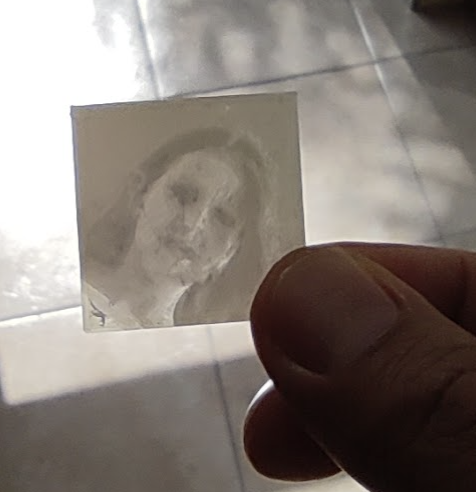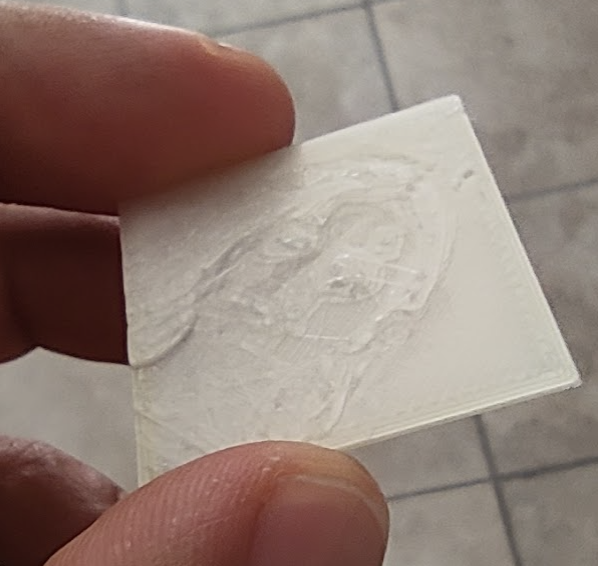pngtostl is a program that converts a PNG image into a litophane, in STL format, suitable to be printed by entry level 3D printers.
It's a piece of plastic (3D printed plastic, usually) that is thicker in correspondence of places where the original image is darker, and thinner in correspondence of places where the original image is lighter. Putting this 3D model negative between the observer and a light source (for instance the daylight sun, a lamp, ...) will show the original image, because the parts where the plastic is thicker will let less light to flow from one side to the other. It's like "developing" a photo negative :)
This is really one of those cases where an image is worth more than words:
The above example was printed using a Prusa Mini printer, using the STL file generated by pngtostl and sliced using PrusaSlicer.
Compile with make (you need libpng). Then use like this:
./pngtostl image.png > model.stl
Warning: use reltaively low resolution images, if the image is big resize it, otherwise the resulting STL file will be huge without any good reason. Most printers can't go over a given (small) resolution anyway. Do a first try with a very small image, like 300x300 pixels, then move to larger images as you want to print larger negatives.
By default the generated model will use 1x1 millimeters per pixel, 20 "levels" (different heights) to generate 20 levels of grey, and will produce a model with total height of 1.2 millimeters: 0.2 millimeters base, 1 millimeter to reproduce the greys.
The conversion to greyscale works just taking the average of RGB pixels, and the 20 greys are selected by normalizing the image min/max luminosity, and mapping the greys (heights) linearly.
Note that after you import the STL in the slicer, you'll likely have to reduce its size, unless the image is tiny. This would produce a model that is too "flat" so you'll have to stretch it to reach 1 or 2 millimeters of height at least: this depends on the layer height you selected in the slicer. If you have a .10 layer height, and a model total height of 1.2 millimeters, only 10 different levels will be printed (0.2 is lost in the base), and so forth.
Using the program options you can change all the sttings discussed above:
./pngtostl --help
png2stl image.png [... options ...]
--relief-height <mm> | Relief height. Default: 1 mm
--base-height <mm> | Fixed base height. Default: .2 mm
--levels | Number of different levels (heights/greys). Default: 20
--negative | Use thicker plastic for black (default).
--positive | Use thicker plastic for white.
If you use a big enough base, you can try to print the model vertically: 3D printers usually have a much higher resolution in the XY plane, so the result will be much better. However in this case make sure the print will not detach during printing (maybe use a brim).
The default is to produce a negative model that you can develop putting it in front of a light source, but the program also supports the other mode, where the lighter parts of the image will be the one with the greater height in the plastic model.
This mode is activated by using the --positive option. This mode is thought
to be used with color change during the print. I'll hope to produce a proper
experiment with it and add a picture here.
This program was written in about 1 hour (it took me more time to do the test and write this README file!) so is very limited and not very optimized. Every pixel is a separated box, this makes its internals a lot simpler but will produce more triangles, and the STL files will be very big.
Every pixel will generate a box that is composed of 12 triangles. Normals are not set in the STL file, instead the right hand rule is used in order to ensure that all the triangles in a box will point outwards.
This program is free software released under the BSD 2-clause license.

